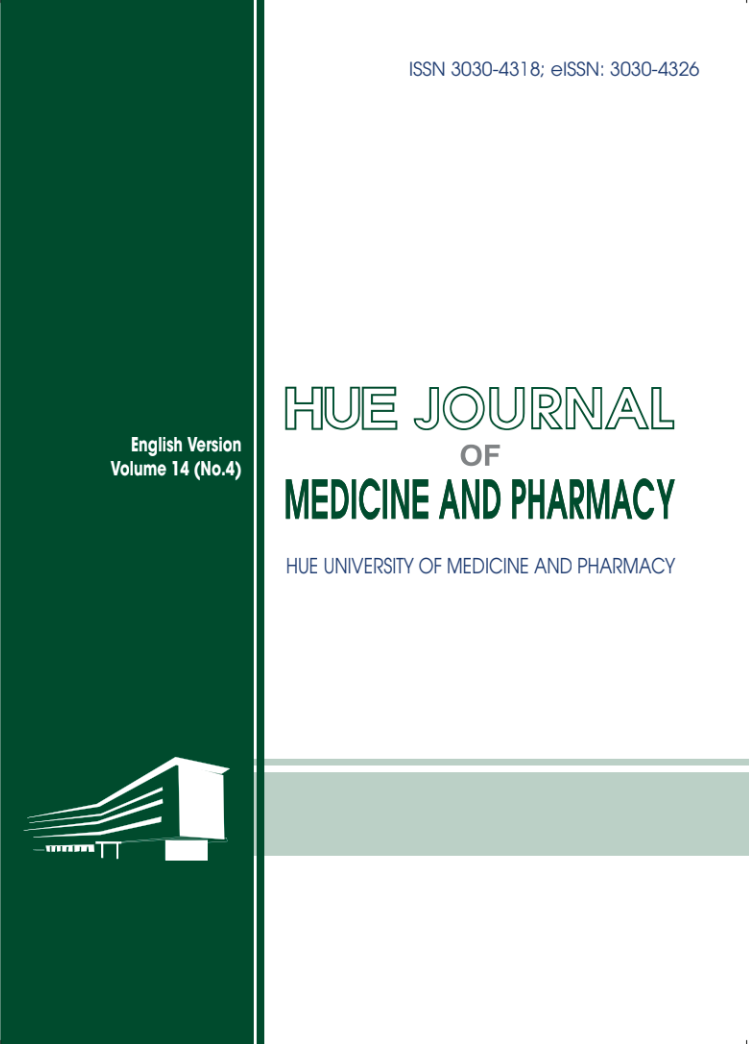Abstract
Background: Heart failure is the consequence of various underlying conditions such as valvular heart disease, myocardial disease, arrhythmias, coronary artery disease, etc. In 2022, the Vietnamese Heart Association issued new recommendations regarding heart failure. Particularly emphasized was the role of NT-proBNP in the diagnosis, prognosis, monitoring, and optimization of heart failure treatment. This study aims to investigate the clinical and subclinical characteristics of heart failure patients according to the VNHA 2022 guidelines and to assess the relationship and correlation of serum NT-proBNP levels with the severity of heart failure according to NYHA classification, degree of anemia, left ventricular ejection fraction, Sokolow index, and left ventricular mass index. Subjects and methods: A cross-sectional descriptive study was conducted on 108 hospitalized heart failure patients at the Department of Cardiology, Hue University of Medicine and Pharmacy from March 2023 to December 2023. Results: The average age in the study was 68.4 ± 13.5 years, with the HFrEF group having a higher average age compared to the HFmrEF or HFpEF groups. The male-to-female ratio was equal. More than half of the hospitalized heart failure patients (56.5%) had HFpEF. Hypertension was the most common comorbidity, accounting for 59.3%, followed by coronary artery disease (38.9%) and atrial fibrillation (29.6%). There were no differences in clinical symptoms among the three groups of heart failure patients. Left ventricular hypertrophy and anemia accounted for significant proportions, at 27.8% and 14.8%, respectively. Patients with HFpEF had higher BMI and atrial fibrillation rates compared to the HFmrEF and HFrEF groups. Among the HFrEF patients, those with Sokolow index ≥ 35 mm and higher LVMI were significantly more prevalent than in the other two heart failure groups. The three groups had no significant difference in left ventricular ejection fraction. There was a positive correlation between NT-proBNP levels and the Sokolow index (Rs = 0.309, p < 0.05) and between NT-proBNP levels and LVMI (Rs = 0.421). There was a strong negative correlation between NT-proBNP levels and ejection fraction (Rs = -0.637). NT-proBNP levels were significantly higher in the anemic heart failure group compared to the non-anemic heart failure group. Conclusion: HFpEF accounted for more than half of the hospitalized heart failure cases. The most common comorbidities remained hypertension, coronary artery disease, and atrial fibrillation.| Published | 2024-06-25 | |
| Fulltext |
|
|
| Language |
|
|
| Issue | Vol. 14 No. 4 (2024) | |
| Section | Original Articles | |
| DOI | 10.34071/jmp.2024.4.12 | |
| Keywords | heart failure, comorbidities, serum NT-proBNP, left ventricular mass index heart failure, comorbidities, serum NT-proBNP, left ventricular mass index |

This work is licensed under a Creative Commons Attribution-NonCommercial-NoDerivatives 4.0 International License.
Copyright (c) 2024 Hue Journal of Medicine and Pharmacy
Tran, L. N., & Le, T. B. T. (2024). Clinical characteristics, subclinical features, and serum NT-proBNP levels in patients with heart failure according to the Vietnamese heart association in 2022. Hue Journal of Medicine and Pharmacy, 14(4), 92. https://doi.org/10.34071/jmp.2024.4.12






